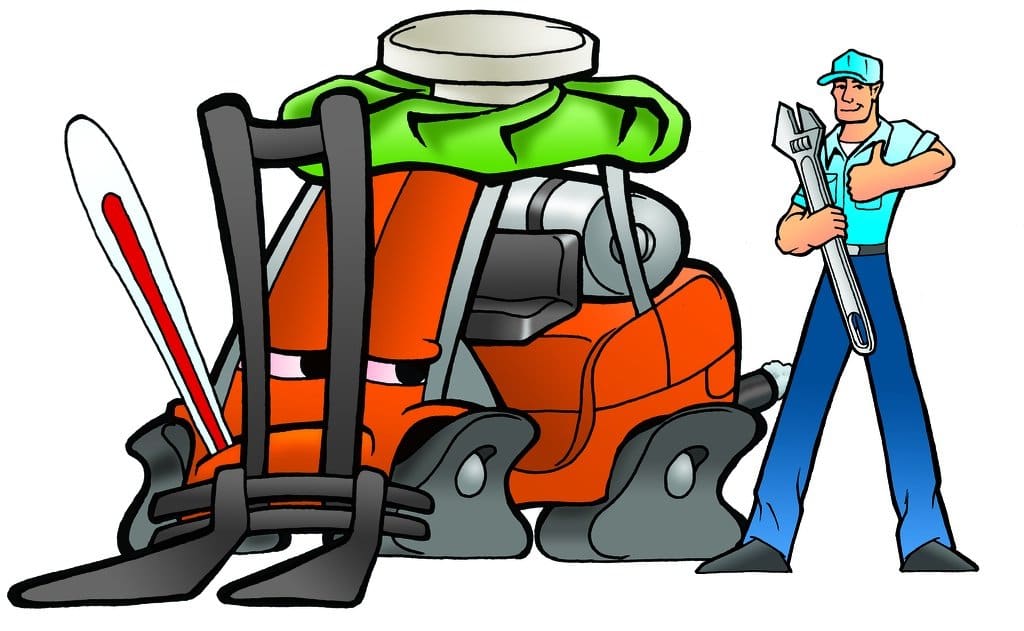
Did you know that forklifts account for around 85 deaths, 34,900 serious injuries, and 61,800 non serious injuries each year? Talk about a lot of people not being safe with forklifts!
Here's a list of 5 important safety points, that you need to know before operating a forklift.
1. Train for safety
OSHA estimates that 35,000 serious injuries and 62,000 non-serious injuries involving forklifts occur annually. Further, data from the Bureau of Labor Statistics shows that 96 U.S. workers were killed in incidents involving forklifts in 2015.
OSHA requires training programs to combine formal instruction, such as lectures and written material, with practical training and a workplace performance evaluation. Washington L&I Safety and Health Technical Specialist Drew Kertzman said that a prevalence of qualified experts and resources has allowed for improved training in recent years. Still, operators should be mindful of the differences between various types and models of forklifts and lift trucks.
“The gap that I’ve seen in the past is just presuming that once you’re trained on one forklift, you automatically know how to maneuver all forklifts,” Kertzman said. “As you get larger and larger (forklifts), they operate differently, and as you go from model to model, they are a little bit different.”
2. Perform checkups
This one is is a commonly skipped step, we've see many instances where a forklift has been neglected for months on end without any inspection of fluids and moving components. Forklifts should not be operated if there are any visible leaks, or issues. It is a violation of safety, always be sure to make sure your forklift is up to speed.
Operators are urged to inspect forklifts before each job, checking first the items that can be monitored without the engine running. Checkpoints should include seat belts, tires, lights, horn, brakes, backup alarms and fluid levels, as well as the moving and load-supporting parts of the forklift.

3. Know the machinery – and the rules
The National Safety Council’s training program for industrial and rough-terrain lift truck operators includes a discussion that may sound elementary to some, but nonetheless is vital to promoting driver, worker and bystander safety: Although lift trucks and personal vehicles share some similarities, they ultimately are quite different.
Among the differences:
Open structure; driver is not completely enclosed
Weights ranging from 9,000 to 30,000 pounds, with rough-terrain lift trucks at the heavier end
Traveling speeds of less than 20 mph, closer to a walking pace
Three-point suspension
More prone to tipping over – loaded or not – and varying stability
Tighter turning radius for operating in tight spots
NSC urges operators to always wear seat belts. Neglecting to do so can cause an operator to be ejected from the forklift’s protective cage if the truck turns over, resulting in a possible serious injury or fatality.
An operator always should be aware of his or her surroundings on the jobsite, as the load or environment may obstruct visibility.
Evans stresses the importance of drivers being aware of, and making eye contact with, pedestrians or other workers during operation. OSHA best practices for maintaining visibility include:
Keep a clear view.
Always look in the direction of travel.
Use spotters or aids such as rear-view mirrors to boost visibility.
Use headlights if working at night, outdoors or in areas in which additional lighting would improve visibility. OSHA requires forklifts to be equipped with headlights when general lighting is less than 2 lumens per square foot.

4. Understand the ‘stability triangle’
An unloaded lift truck’s center of gravity – where the weight has equal concentration – typically is higher than that of a personal vehicle, NSC states. The load has its own center of gravity, and once it’s picked up, a combined center of gravity between the load and truck is established.
Lift trucks are built on three-point suspension systems, the physics of which resemble a triangle. Support points lie at both ends of the front axle, with another located at the center of the rear axle. Together, NSC states, this forms a “stability triangle” that operators must stay within when the truck is in motion.
Numerous factors can cause a lift truck to vacate the stability triangle, including unstable, heavy, wide or raised loads; fast starts and stops; taking corners too quickly; and rough terrain.
Before operation, ensure a load is completely stable and secured on the forks.
Keep loads low to the ground during operation.
Keep loads uphill when climbing or descending an incline.
Drive slowly in wet or slippery conditions.
Slow down during turns, and honk the horn upon encountering traffic.
5. Know about load basics
OSHA advises operators to check loads before picking them up with the forks, ensuring the load’s stability and dimensions will allow for safe transport. Move squarely in front of the load and move the forks apart as far as possible before driving them under the load. Make sure to not overload and that the load is centered.
Slightly tilt the forklift mast backward before lifting. Lift the load enough to clear the floor or rack. For stacking, OSHA recommends lifting the load above the lower stack by about 10 centimeters, or 4 inches.
When placing a load, operators should be squarely in front of the placement destination, Washington L&I states. Make sure the area is flat and stable, and don’t place heavy loads on top of light ones. Lower the forks upon placing the load, and then back the forklift away. As always, ensure the load is stable.
Due for a preventative maintenance service call? We're offering a $80 (+ parts and fluids) special for first time customers!
Call us at (407) 695-4387 or fill the form below and one of our representatives will contact you




Leave a comment
This site is protected by hCaptcha and the hCaptcha Privacy Policy and Terms of Service apply.